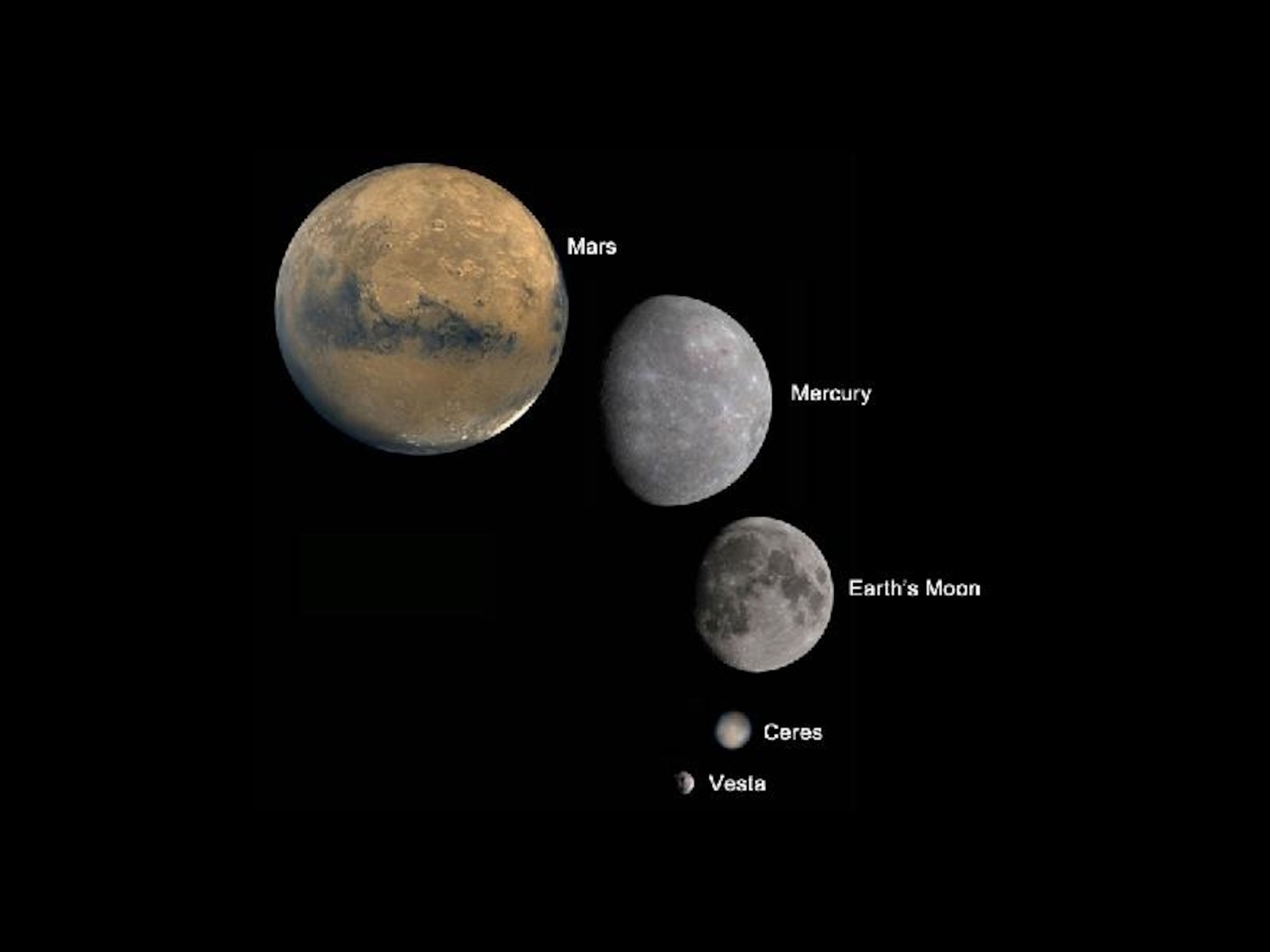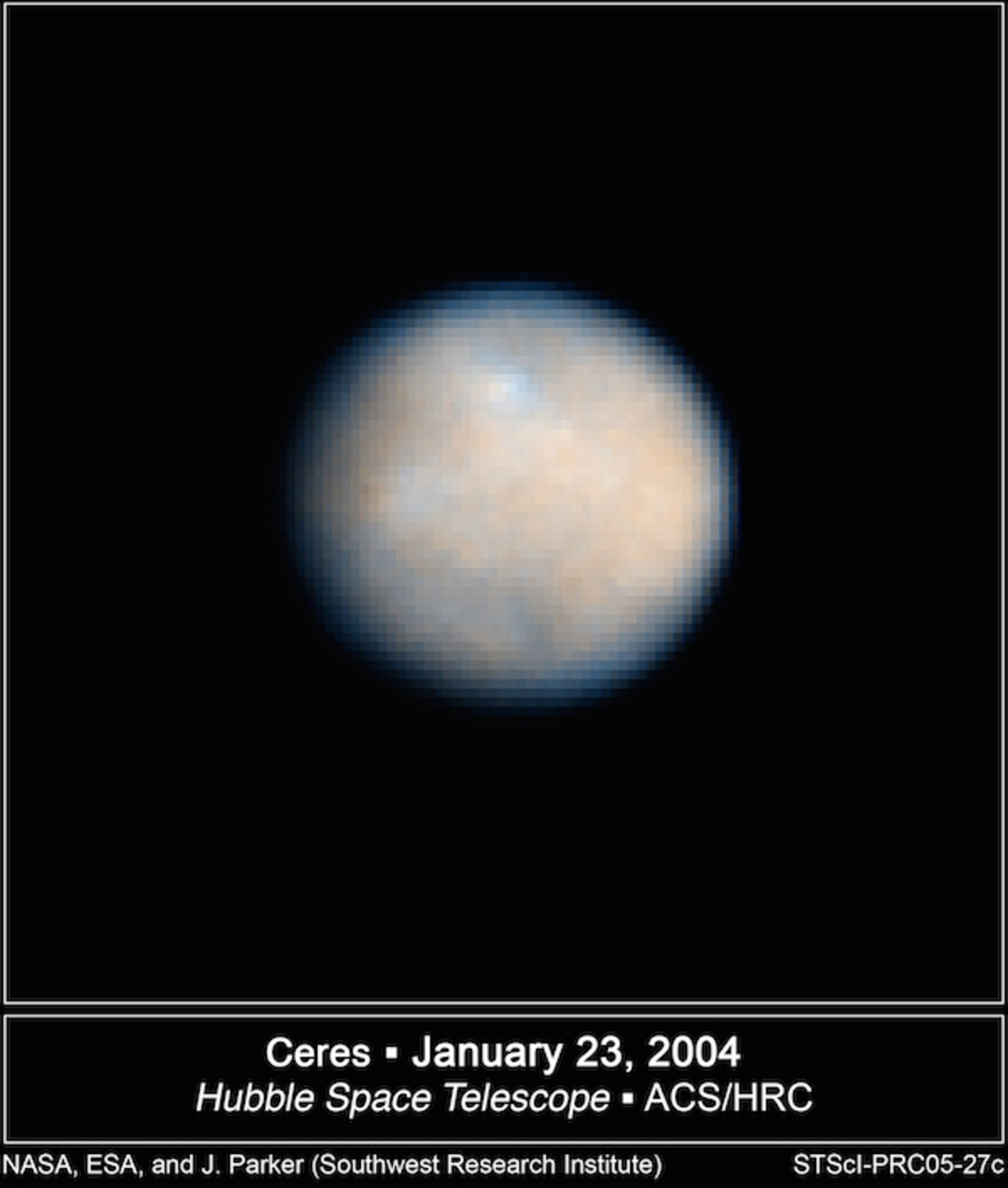
Cosmic Ray Delays Spacecraft Headed for Dwarf Planet
Late last week, an errant, high-energy particle struck part of the Dawn spacecraft‘s electrical system, disabling the NASA craft’s ion thrusters and sending it into safe mode on Sept. 11. The Dawn mission team spent the weekend investigating what had happened, and after four days were able to restart Dawn’s journey to dwarf planet Ceres, the largest body in the asteroid belt.
As a result of that cosmic strike, Dawn’s science orbits around Ceres will begin in April 2015, about a month later than expected*. But not to worry.
“The spacecraft is healthy,” says Marc Rayman, Dawn Mission Director and chief engineer. “We are still on course for Ceres, and we have every expectation of conducting the full exploration of Ceres, which is the first dwarf planet ever discovered.”
Soon, the team will repair the disabled ion engine and get it back online. It’s not the first time mission engineers have done this; in fact, a similar radiation strike disabled the ion propulsion system three years ago, while Dawn was approaching its first target, the dry and dusty asteroid Vesta. “We restored the same part simply by turning it off and turning it back on,” Rayman says. Really. It’s that simple. He notes that there is some actual physics explaining why this solution works for this particular component — it’s not being done out of an absence of better ideas.
High-energy particles, commonly called cosmic rays, are one of the hazards of space travel. In space, there’s no protective magnetic field or atmosphere to deflect them, as there are on Earth. So, even though interplanetary spacecraft wear radiation shields, some of the highest-energy particles still manage to slip through occasionally (sometimes, one of these particles will even strike a camera and produce a weird image, causing all kinds of wild speculation on Earth).
If you’re like me, any mention of a problem on Dawn sends you into a slight panic. The spacecraft has been assigned an exciting and unprecedented task: Orbit and study Vesta and Ceres, the two largest bodies in the asteroid belt. Never mind that these worlds are nowhere near one other.
Should Dawn succeed, it will be the first spacecraft to slip into orbit around two distinct extraterrestrial worlds — and it would be a sad day indeed if that doesn’t happen.

Launched in 2007, Dawn took less than four years to reach its first target, the giant, 525-kilometer wide asteroid Vesta. It then spent 14 months circling the pockmarked space rock, peering closely at its unusual shape. Vesta proved to be a more exotic object than scientists had anticipated. The source of many meteorites on Earth, Vesta is more a failed planetary seed than just an overgrown, lumpy asteroid. Its south pole had been mostly obliterated by two giant impacts and now hosts one of the tallest mountains in the solar system. Grooves and fractures deform its equator. There’s evidence for past volcanic activity, and Vesta’s interior is divided into a core, mantle, and crust — just like a planet’s.
At this point, Dawn’s mission is already halfway complete — but it’s possible the best part of the journey lies ahead, at Ceres. Hurtling through space, Dawn is well on its way to the watery dwarf planet, propelled by blasts from its next-gen ion thrusters. Now about 4.8 million kilometers away from Ceres, Dawn is so far from Earth that radio signals traveling at the speed of light take a bit more than 25 minutes to reach the spacecraft.

Some scientists have suggested that 950-kilometer-wide Ceres could be a life-friendly world. What little we know about the faraway icy sphere suggests that it could have a super thin atmosphere, and there’s quite a bit of water there. Its interior could be differentiated, like Vesta’s, with a mantle containing more water than all of Earth’s oceans. In January, scientists reported twin tufts of water vapor wafting from the dwarf planet; whether those tufts are produced by volcanic activity or the sun’s warmth is a mystery that Dawn should be able to solve.
The year Dawn is supposed to spend studying Ceres from orbit will be crucial for unlocking its secrets, and the secrets of the dwarf planets in general. These runty worlds are the most common type of planet in the solar system — and we know next to nothing about them.
Of course, a few months after Dawn arrives at Ceres, a second dwarf planet will emerge from the darkness when the New Horizons spacecraft arrives at Pluto. By the end of next summer, if all goes well, we will know more about dwarf planets than ever before. So let’s all hope that Dawn and New Horizons stay healthy on their journeys into the unknown.

This post has been updated with comments from Marc Rayman, Dawn’s Mission Director and chief engineer.
*Because of the way Dawn’s ion thrusters work, it slips into orbit a bit differently than other spacecraft. Rather than zooming over and slamming on the brakes, Dawn constantly shapes its orbit around the sun to match that of its target. So the situation is actually a bit more complicated. Those four days without propulsion — during which Dawn’s trajectory wasn’t being massaged to match Ceres’ — mean that Dawn might well arrive at Ceres a bit earlier than expected. But it will be going faster and will take longer to spiral down into data-collecting orbit, which is why the science portion of the mission will be a bit delayed.
